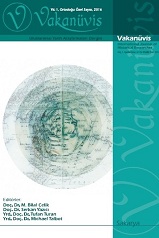16. Yüzyılın Sonlarında Balkanlarda Bir Maden İşletmesi: Kamengrad Demir Madeni
A Mining Processing Facility in the Balkans during the Late 16th Century: Kamengrad Iron Mine
Author(s): Mehtap ÇelikSubject(s): Geography, Regional studies, Economic history, 16th Century, The Ottoman Empire
Published by: Serkan YAZICI
Keywords: Bosna; Kamengrad; mine; iron; cannonball;
Summary/Abstract: In this paper, the form of organization and management of iron facilities that were among the important resources of revenue for the Ottoman state treasury is aimed to be elaborated by focusing on a micro-scale geography. The number of studies concentrating on the issue of mining facilities is very limited amongst the studies focusing on the Ottoman economic history and conducted for the classical era. Hence, this study is important as a contribution to the Ottoman financial and administrative history. It is observed that the Ottoman Empire turning into an important power in the Anatolia and Balkans during the era of Fatih Sultan Mehmet captured almost all of the mining sites in these territories as it facilitated self-sufficiency policy of the Empire in terms of both financial and military concerns, and consequently tried to improve the legal status of mining sites by continuously issuing mining code of laws (kanunnâme) starting from the beginning of the classical era in order to keep the mining facilities under control and to prevent disruption in production. As it is known, Balkans was a region of rich silver, iron and copper ores. There were rich mines of iron in Bosnia, where the case study area is located, in addition to gold and silver mines. And one of these mines was Kamengrad iron mine that was put into operation towards the end of the 16th century. Kamengrad iron mine providing one of the important raw materials required in the Ottoman manufacturing system industry was operated under the control. The Empire acting sensitively in the protection of both the mines and reâyâ (the Ottoman subject class composed of mainly peasants and farmers) working in these mines took all the necessary precautions in order to sustain the production of iron in this mine without any interruption, and by doing so, tried to meet, in general, the army’s, and in particular nearby castles’ demand for cannonball ammunition.
Journal: Vakanüvis- Uluslararası Tarih Araştırmaları Dergisi
- Issue Year: 5/2020
- Issue No: 2
- Page Range: 587-610
- Page Count: 24
- Language: Turkish

